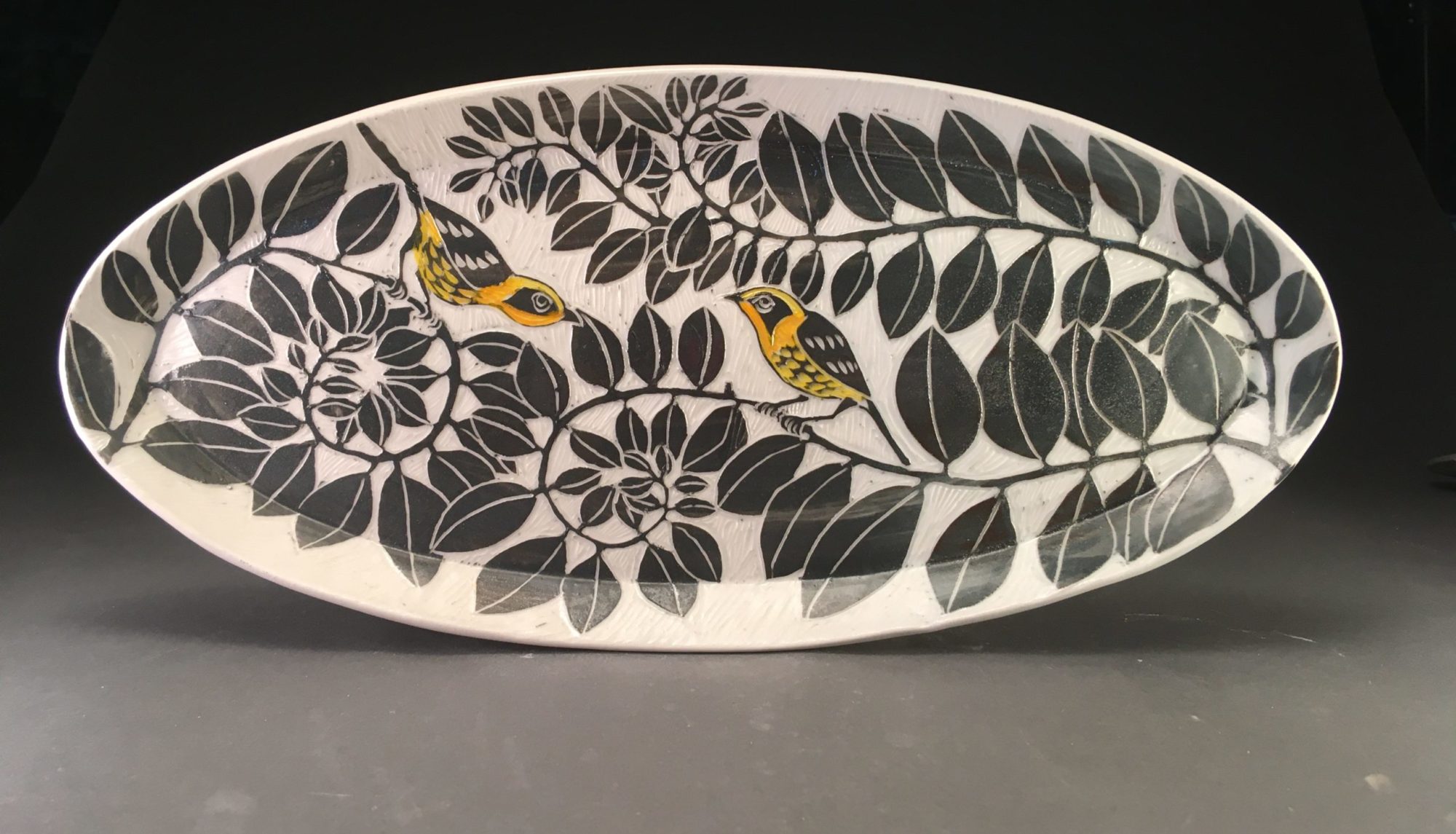First lesson plan
Philosophy:
I do not offer the children tools to begin with as they become fascinated with the tools and do not use their hands. I believe students should build their small muscle co-ordination as well as their confidence with the clay by having direct contact and learning to make the basic shapes that are the building blocks of most forms.
Because clay is stronger when rolled and compressed, it’s good to teach the students to go through the steps to make the 3 basic shapes.
These shapes can be used to make just about everything.
snakes
balls
pancakes

One can make so many things with these forms!
Then there are variations and combinations of the forms. As the kids become more proficient at making them, they can progress to the more advanced uses.
Let me interject an essential note in here. It is not important for kids to make projects. For young children, the process is far more important than the outcome.
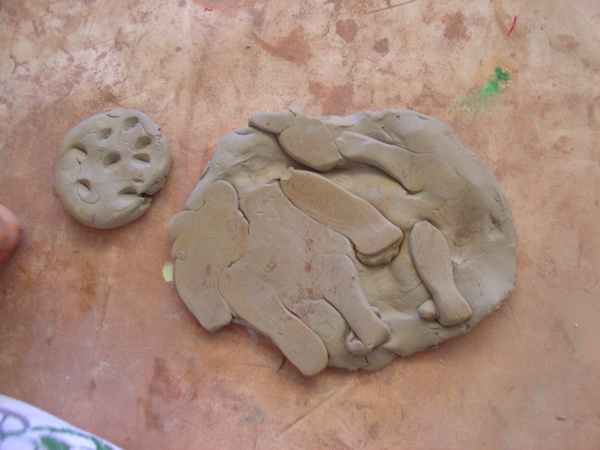
But projects are also a great way to add value to what they are learning. If you are studying bugs for example, then it’s a vehicle to discuss how many legs or eyes insects have vs. how many spiders have.

1. The ball is a great head or body as well as smaller ones for eyes etc. Often it is the first step that leads to a pinch pot or a round pancake.
Student’s favorite Ball project: a snowman

2. Snakes or coils as they are called, become arms and legs

and later, coil pots and handles; thicker coils become the bodies of many things-
the “yam” shape is handy for dinosaurs and birds
“potato” for heavy bodied animals like elephants and hippos
“carrots” become humans.
3. Pancakes are basically slabs and you can make many hollow forms with them but in the beginning, they also function as a great base for many kids’ projects and serve to support the often thin and fragile things kids make.

Projects
Good first projects with balls, snakes & pancakes are:
bugs – bugs have lots of legs and eyes and the balls can be bodies- spiders, caterpillars, ants, etc.

Octopus- again, lots of legs and a big ball for the head.
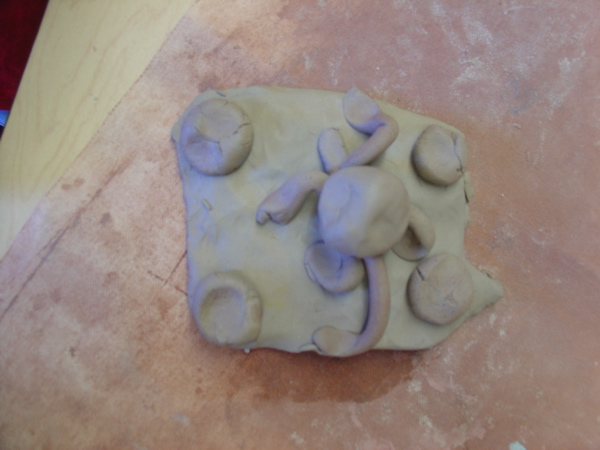
Turtles- throw the ball down on the table so it is a half a sphere – that is the shell, an asterisk of 3 snakes become the four legs, head and tail and a small pancake is the chest plate.
Porcupines and hedgehogs: have the kids poke their fingers into a medium sized ball to make many holes and then insert short snakes into all the holes. Add a face.
These are all ideas about getting the kids started but what we ended up talking about to the kids was
“making the clay strong”.
I got this idea talking to the 4th graders. I am far too frequently asked things like “Can I decorate it?” “Can I make a dog instead?” or ” Is it okay if I paint it red?” These are questions of aesthetics.
“I am here”, I explain to the 4th graders, “to make sure whatever you decide to make doesn’t fall apart. In a perfect world, we would all go down to the side of the river and find some clay and you could all experiment for as long as you liked to see what would work and eventually through trial and error, you would figure out how to make things that didn’t fall apart.
Unfortunately we don’t have that luxury. You only have 40 minutes once a week. So I am here to help be a shortcut for you to learn about how to make your clay pieces strong.”
So when I was working with the kindergartners, I talked a lot about a piece being strong or not strong. Having a pancake underneath was a big feature.
As I have been teaching for almost 20 years, I see certain recurring themes among early childhood students and clay.
There is the Pieced together Really Long Snake (a favorite of my son) The student wants to make the longest snake ever.
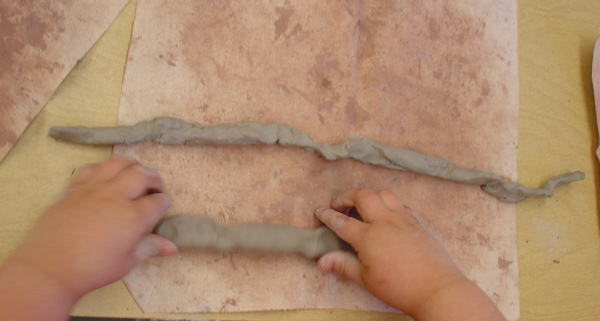
Many enterprising students love the Parts of the Face
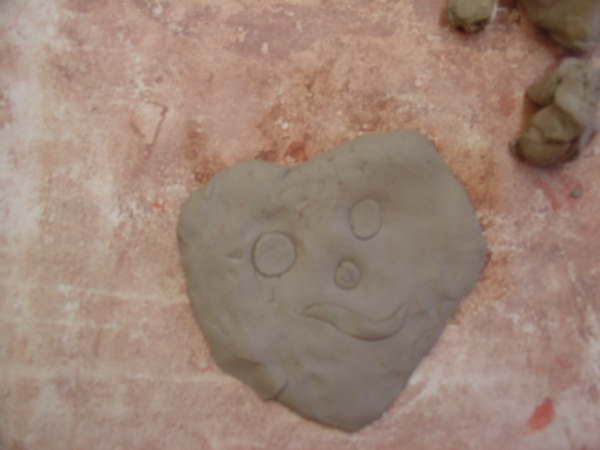
 These are really just clay “drawings” and as such qualify more as 2-D but what is important about them is that students see they can make a shape in 3-D and flatten it into the appropriate shape in 2-D.
These are really just clay “drawings” and as such qualify more as 2-D but what is important about them is that students see they can make a shape in 3-D and flatten it into the appropriate shape in 2-D.
A variation on this is the flat flower. I don’t have an example today but believe me, I’ve seen many.
A huge favorite is the Birthday Cake

followed closely by all sorts of food chief among them, a taco and a burrito and a hot dog.
Then there’s the clay “toy”. It could be a spaceship, a dinosaur or a race car. These are thrown together as fast as possible so they can be played with and they have very short lives.
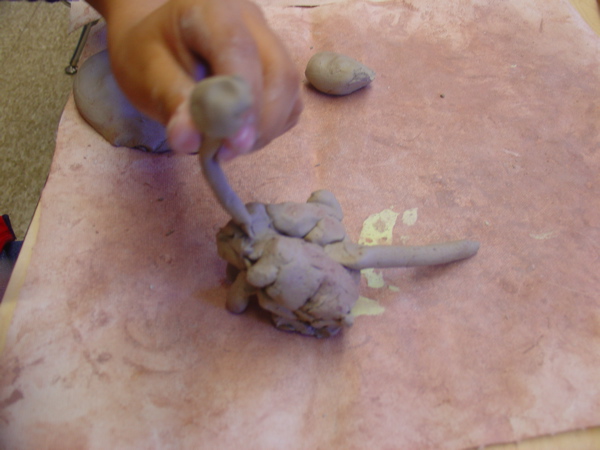 The student must hold the head up but he doesn’t mind. This is a flexible moving thing he’s made- he doesn’t perceive it as something that must be fired and turned to stone.
The student must hold the head up but he doesn’t mind. This is a flexible moving thing he’s made- he doesn’t perceive it as something that must be fired and turned to stone.
As you can see from that dinoaur, children tend to think of living things in parts and they make them all separate and then attempt to join them together. It is sometimes difficult to get them to make the head, neck, body and tail of a dinosaur all out of one piece of clay which would make it a lot stronger (and more realistic looking too!) –I need to get a photo of that up
Animal Families are another favorite. Note we had to keep adding pancakes under this snail family as it grew.
 Well, we have only glimpsed the tip of the iceberg here in things to consider when teaching clay to young children.
Well, we have only glimpsed the tip of the iceberg here in things to consider when teaching clay to young children.
Perhaps you should sit by the side of the river and find out what works and what doesn’t!
To review:
Process not Product.

Good technique leads to strong pieces.
Students can always learn about more than just the clay; clay is ideal for tying in with many curricula.
But that’s a topic for another day!
